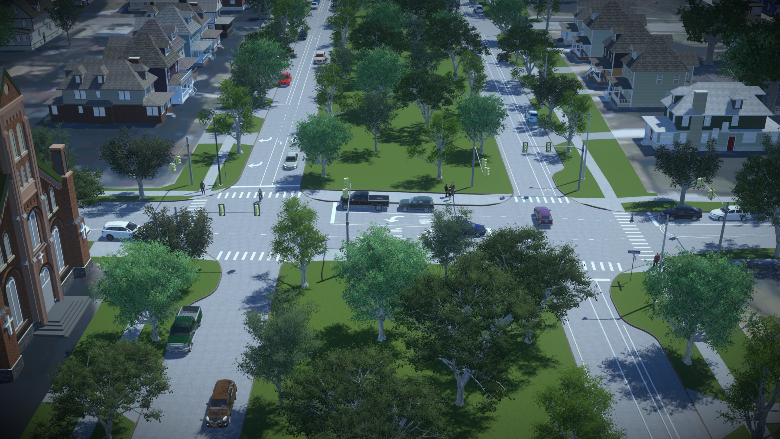Highways
FHWA Approves $1B Expressway Cap Project to Reunite Buffalo, NY, Neighborhoods

The project would cover a section of the Kensington Expressway and add public green space more in line with the Humboldt Parkway that the highway replaced decades ago.
Rendering courtesy of New York State Dept. of Transportation
The Federal Highway Administration (FHWA) approved the $1-billion Kensington Expressway project in Buffalo, N.Y. after finding it would have no significant environmental impact, according to a Feb. 22 notice in the Federal Register. The plan is to cap a section of the highway to reconnect communities and add green space.
With the federal approval, the New York State Dept. of Transportation aims to start construction by the fall, Gov. Kathy Hochul said at an event to announce the project’s advancement.
The project involves covering a 4,150-ft-long, six-lane section of the Kensington Expressway, also known as State Route 33, from Dodge Street to Sidney Street in East Buffalo. The cap would be used as public green space with at least 3 ft of soil on top to allow for mature trees up to 50 ft tall.
The planned scope also includes rehabilitating 9 miles of local streets, adding “complete street” features for pedestrians and cyclists and replacing the Best Street Bridge to build a roundabout at the Best Street interchange. The work is expected to support hundreds of union construction jobs, according to Paul Brown, president of the Buffalo Niagara Building Trades Council.
The Kensington Parkway was originally built in the 1950s and ‘60s. It replaced the historic tree-lined Humboldt Parkway, which had been designed by Frederick Law Olmsted—best known for his work designing New York City’s Central Park. In its place, a below-grade highway divided East Buffalo neighborhoods. More than 600 homes were demolished to make way for the expressway, and most of the displaced residents were Black.
“Hundreds and hundreds of lives were uprooted and businesses destroyed all in the name of this quicker route to the suburbs,” Hochul said.
Buffalo Mayor Byron Brown called the plan “a true people’s project.” Jomo Akono, business representative at Carpenters Local 276 as well as vice president of the Buffalo Juneteenth Festival, said in a statement that residents have been fighting for this project for decades.
“This project will prepare to repair our community, honoring the many who have passed but left us instructions to help heal the small differences our community is facing and leaving room to heal and grow,” Akono said.
 The six-lane Kensington Expressway divides parts of East Buffalo. Photo by Mike Groll/New York Governor's Office
The six-lane Kensington Expressway divides parts of East Buffalo. Photo by Mike Groll/New York Governor's Office Hochul compared to the plan to other projects projects aimed at reuniting neighborhoods bisected by highways around the middle of the last century, such as in Syracuse, where the state is working to replace a viaduct carrying I-81 with a “community grid,” and in Rochester, where design is underway for a plan to replace a partially below-grade highway with local streets, parks and land for new development.
“And now we are laser focused on sewing back together the wonderful tapestry known as East Buffalo,” she said.
The U.S. Dept. of Transportation awarded the project a $55.6-million grant last year through its Reconnecting Communities pilot program funded by the Infrastructure Investment and Jobs Act. It was the largest grant in the funding round.




